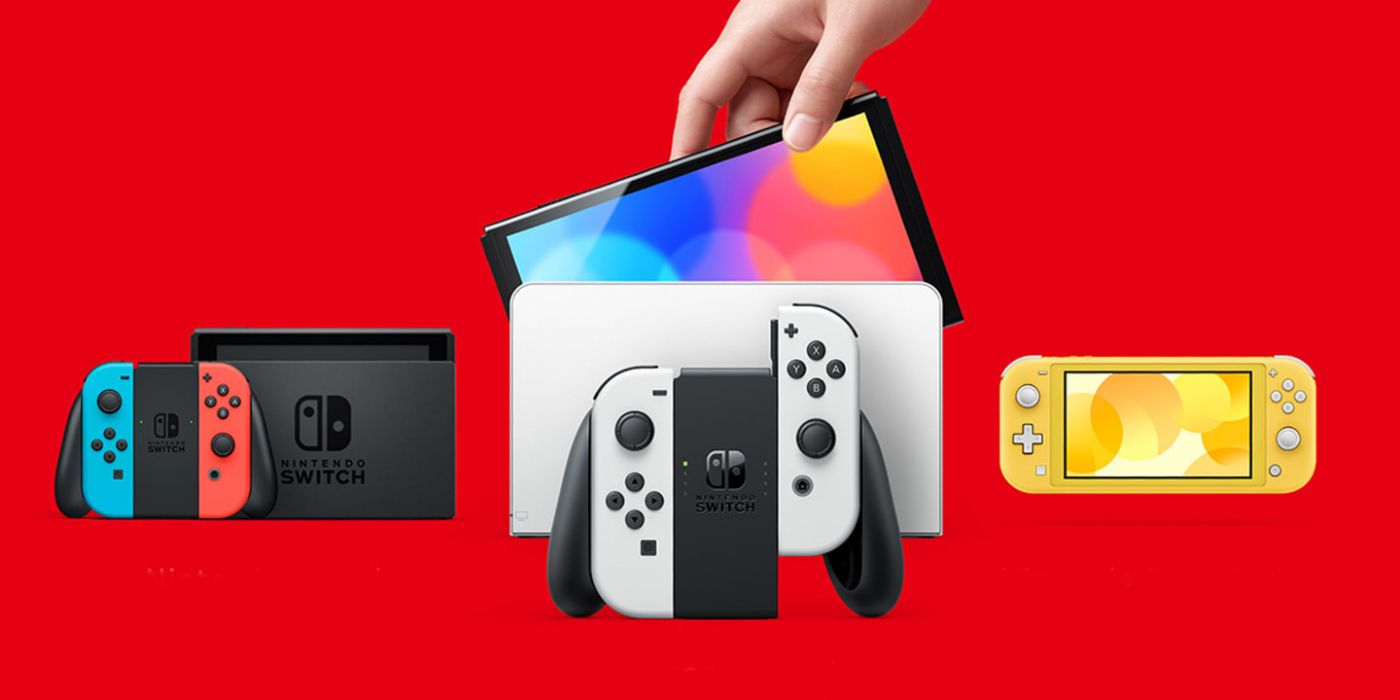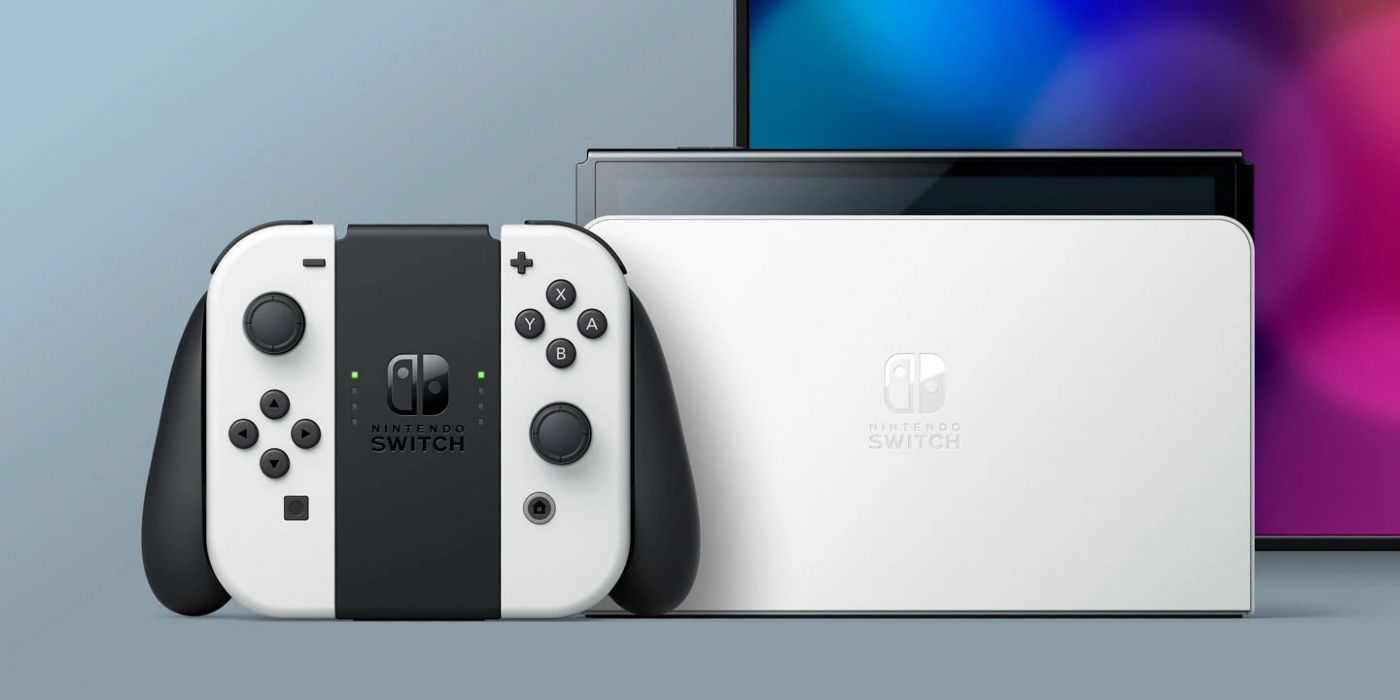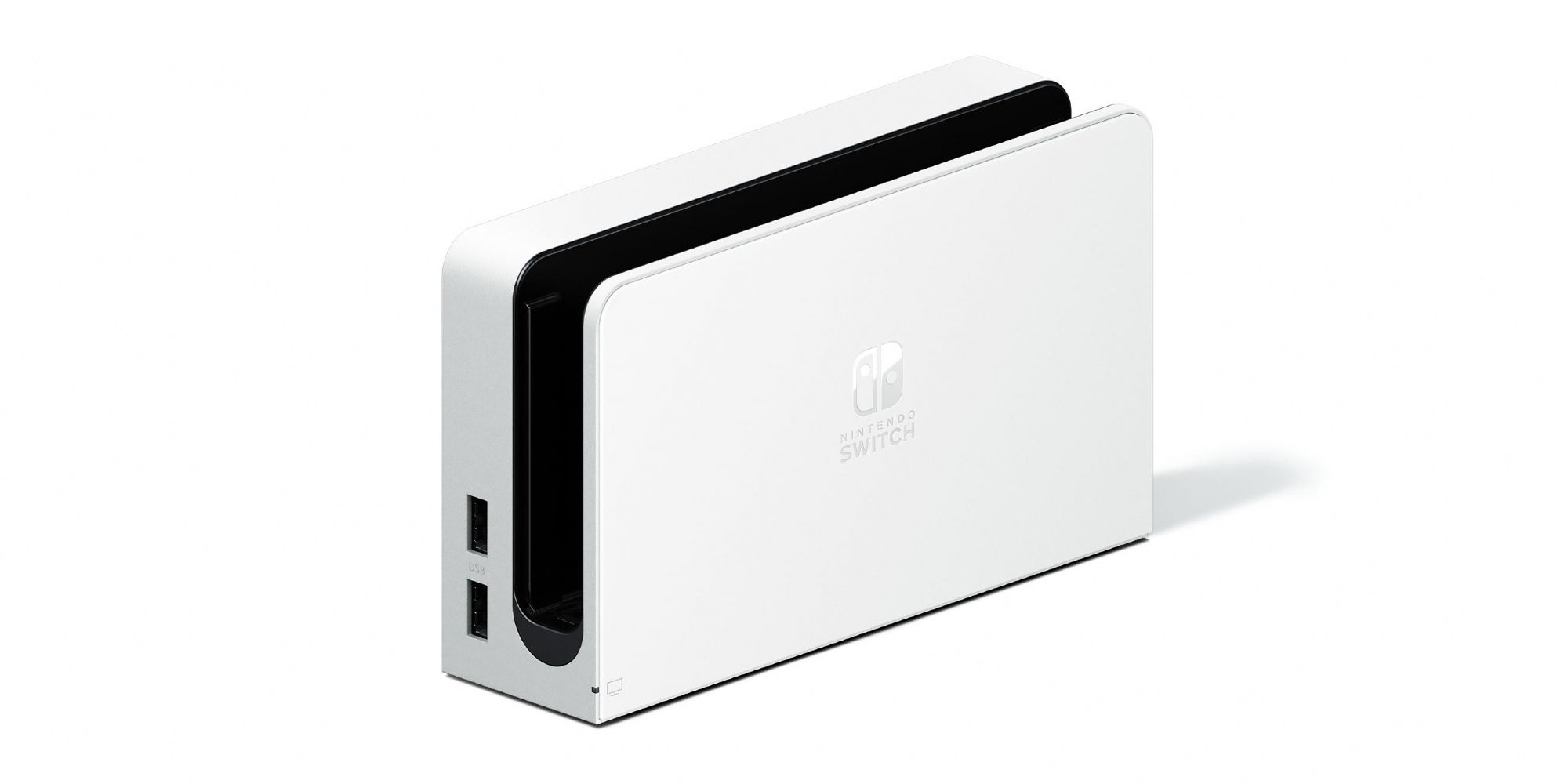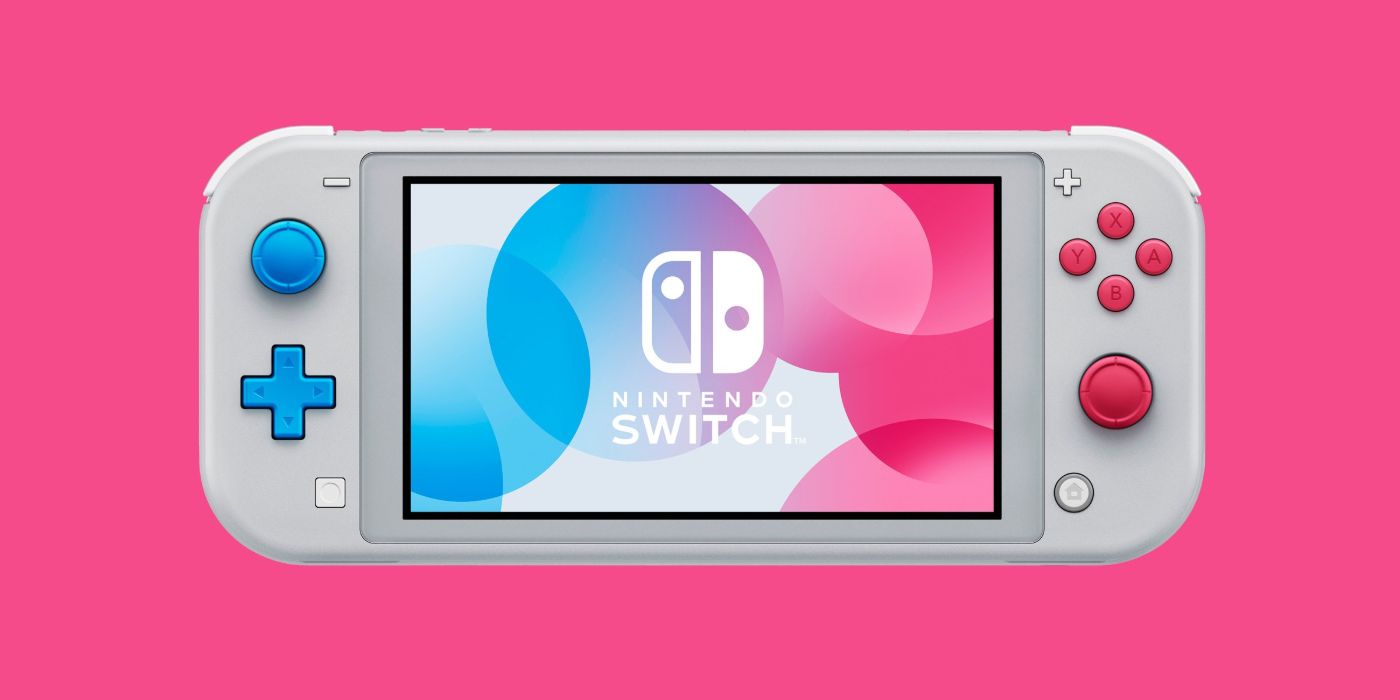Nintendo has unveiled a new model of the wildly popular handheld/home console hybrid, the Nintendo Switch OLED Model. As the name implies, this new model boasts a new screen, upgrading the original Switch from an LCD to an OLED display. This marks the third available switch model to come to market, after the Switch Lite - which only supports handheld play - came out in 2019. The Switch OLED is expected to arrive in October, will cost $350, and has slightly different technical specifications than its predecessors.
Although rumors of a so-called Nintendo Switch Pro have been circulating for a long time, the new OLED Model does not appear to be what most were expecting. Many thought the next iteration of the Nintendo Switch would make the jump to 4K support with more impressive hardware. Although none have been entirely correct so far, speculation continues to swirl, with new Switch Pro rumors now suggesting it will be coming next year.
Instead of a step forward, this seems to be another lateral move by Nintendo, similar to the last time a (less drastic) model change occurred. Just ahead of the Switch Lite's release, the standard Switch received a new model number to denote a more efficient chipset being used for the sake of increased battery life. Although an OLED screen is a nice upgrade from an LCD, there isn't much of a difference between the Switch and the Switch OLED. What follows is a detailed comparison of the two, along with a look at what sets the OLED Model apart from the Switch Lite.
Switch OLED Model Compared To Original Nintendo Switch
The biggest difference between the original Switch and the new OLED Model is, as the name would imply, the screen. OLED stands for Organic Light-Emitting Diode, which is a technical way to say that each pixel produces its own light. This is not how the original Switch's LCD display works, which has a backlights illuminating its pixels. According to TechRadar, OLED screens allow for brighter images while using less power, and true black is possible since pixels can be turned off individually.
The new Switch's screen is also slightly bigger, measuring 7 inches compared to the standard Switch's 6.2 inch screen. This very slightly increases the length of the entire console by 0.1 inch across, meaning the bezel surrounding the screen will be slightly smaller on the OLED, since the horizontal difference between the screens is greater than 0.1 inch.
The other outwardly physical difference between the two is the new, sturdier kickstand on the back of the OLED Model. The new kickstand runs the length of the console, providing much greater support than the small, clip-like stand of the original. These two changes to the casing's design have added a little weight, taking the Switch OLED up to 0.93 pounds from 0.88 pounds (with the Joy-Cons attached).
As for performance specs, the two are incredibly similar. The new OLED Model comes with 64 gigabytes of internal storage, double the original Switch's - though both still support memory expansion through microSD cards. The Switch OLED announcement made special note of improved audio capabilities, but Nintendo hasn't listed any specifics outside of both models having stereo speakers. Everything else about the consoles themselves are exactly the same, including their CPU, GPU, video output capped at 1080p when docked, and even their recommended operating environment of 41-95 degrees Fahrenheit between humidities of 20 and 80%.
Nintendo Switch Docks Comparison
The OLED Model's dock has made a notable improvement over the original, coming equipped with a LAN port, a feature that was rumored for the Switch Pro. Standard Switches need a peripheral - sold separately, of course - in order to be hard-wired to the internet. It appears this may have come at the expense of a USB port. The Switch OLED dock has "USB Port (USB 2.0 compatible) x2 on the side," while the original dock comes with "USB Port (USB 2.0 compatible) x2 on the side, 1 on the back."
The dock for the OLED Model has also been suitably enlarged by 0.1 inch across in order to accommodate the longer console. It is, however, thinner overall than the previous iteration, taking roughly that 0.1 inch from its depth. The color has also changed from black to white, and the latched door which covers the ports on the back seems to be slightly different, though functionally the same.
Switch OLED Model Compared To The Switch Lite
For those unfamiliar, the Switch Lite is the colorful, handheld-only option when it comes to the three Switch models. It is incapable of using a dock, and therefore will not display on a TV. It is lighter and smaller than the Switch OLED Model, with only a 5.5 inch LCD screen. The Switch Lite also has a slightly shorter battery life, lasting somewhere between three and seven hours depending on the game. For comparison, the batteries in the original Switch and the Switch OLED last from four and a half to nine hours.
The Switch Lite also does not have detachable Joy-Cons, since the entire handheld is a single piece of hardware. This could potentially be big inconvenience for buyers, since Joy-Cons are prone to drifting analog sticks, even those built into the Lite. Nintendo is usually pretty accommodating when it comes to repairing drifting Joy-Cons, but if the issue crops up on a Switch Light, the whole system has to be sent in for repair. Nintendo's Joy-Cons do not appear to have gone through any production changes alongside the OLED model, meaning drift will likely be a continuing issue.
Aside from the screen size and the ability to connect to a TV, the Switch Lite and Switch OLED are roughly the same in terms of performance when it comes to handheld mode. The Switch Lite has less internal storage, just like the original Switch, weighing in with 32 gigabytes, but the games will run roughly the same although they can't be displayed in the higher fidelity of docked mode.
Ultimately, the OLED Model of the Nintendo Switch is not a significant leap forward, and many might question the increased price point for what is essentially the same machine equipped with a moderately better display. It's disappointing to see Nintendo release a new Switch iteration without addressing ongoing problems, such as opting use the same fragile Joy-Cons, or maintaining the comparatively low processing power. The decision of which model to purchase still largely comes down to personal preference. The OLED screen might look a little nicer, but the games will run the same way they do now. The new white color looks pretty sleek, but the announcement of the Nintendo Switch OLED Model won't satisfy those looking for better specs.




